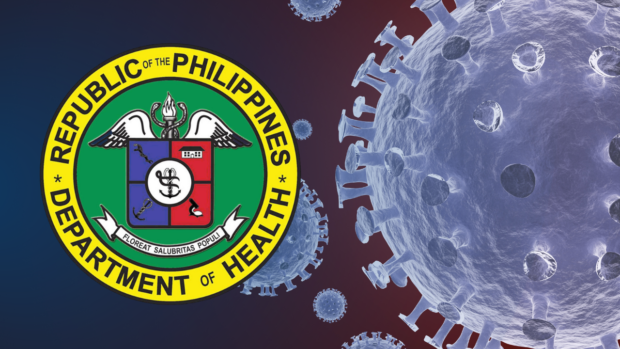COVID-19 positivity rate up in Metro Manila, 5 provinces
The number of people found positive for COVID-19 out of all those tested in Metro Manila and five provinces has risen above the 5-percent World Health Organization (WHO) benchmark that indicates containment of the coronavirus in a given location, but the Department of Health (DOH) was not alarmed.
Data from the independent pandemic monitor OCTA Research on Friday showed that the positivity rate, the proportion of the people tested who came out positive, jumped from 3.0 percent on June 18 to 5.6 percent on June 22 in the National Capital Region (NCR).
The WHO considers an area has contained infections when it has kept the positivity rate to 5 percent or less for 14 days.
OCTA also recorded positivity rates above 5 percent in the provinces of Batangas, Cavite, Laguna, Rizal and Iloilo.
Of the five, Batangas made the highest jump—from just 1.2 percent on June 18 to 5.3 percent on June 22. It was followed by Cavite (3.6 percent to 5.7 percent during the same period), Laguna (3.2 percent to 7.1 percent) and Iloilo (4.4 percent to 5.6 percent).
Article continues after this advertisementRizal already recorded 6.3 percent on June 18 and this climbed to 8.2 percent four days later.
Article continues after this advertisementThe DOH quelled concerns about the rise, pointing out that positivity rate “should not be the only basis for assessing our current situation.”
“Most COVID-19 cases nowadays are mild or even asymptomatic, even if the positivity rate is high,” it said in a statement on Thursday. “It is important to consider the overall picture of transmission and case severity, which is what the alert level system does.”
It said that tests were now being made in a focused manner.“Our protocol for testing is risk-based, meaning we conduct fewer tests that are directed towards more likely positive cases. This gives us a higher positivity rate,” the DOH said.
As of June 21, the national positivity rate was 3.7 percent, according to DOH figures. NCR posted a positivity rate of 5.2 percent on the same day, the only region to breach the 5-percent benchmark.
Mimaropa and Western Visayas followed with positivity rates of 4.9 percent and 4.3 percent, respectively.
The daily COVID-19 infections also rose for four straight days, breaching the 700-mark on Thursday, according to the COVID-19 tracker data from the DOH.
Scale up booster drive
The 770 new cases recorded on Friday was up from 716 the previous day. The total number of active cases reached 6,000 for the first time since April.
As of Friday, the country has logged 3,699,251 total cases with the death toll rising to 60,507.
Anticipating the need to provide more protection to the public in general and schoolchildren in particular, Sen. Sherwin Gatchalian said local governments and schools should scale up their efforts to provide booster shots for those age 12 to 17 ahead of the resumption of face-to-face classes in public schools in August.
The chair of the Senate basic education committee said the booster dose, which had been approved for that age group, would give these children “an added layer of protection.”
20M lives saved
The Department of Education (DepEd) is planning on holding 100-percent in-person classes when schools reopen. Although COVID-19 vaccination is not mandatory for face-to-face classes, increasing vaccine coverage would improve safety in schools, the senator said.“Now that booster shots have been approved for minors, or those between the ages of 12 and 17, our local governments and schools should make sure that the system of administering the shots is orderly,” Gatchalian said in a statement on Friday.
“We need to take all possible measures to ensure the safety of our students when face-to-face classes resume,” he said.
A global study said vaccines had prevented nearly 20 million deaths in the first year after they were introduced.
Modeling study
The first large modeling study on the subject published on Friday in The Lancet Infectious Diseases was based on data from 185 countries and territories collected from Dec. 8, 2020 to Dec. 8, 2021.
It found that 19.8 million deaths were prevented out of a potential 31.4 million deaths that would have occurred if no vaccines were available, according to a Reuters report on the study.
The model accounted for variation in vaccination rates across countries, as well as differences in vaccine effectiveness based on the types of vaccines known to have been primarily used in each country.
The study excluded China because of its large population and strict containment measures, which would have skewed the results.
Access to vaccines
It found that high- and middle-income countries accounted for the largest number of deaths averted, 12.2 million out of 19.8 million, reflecting inequalities in access to vaccines worldwide.
Nearly 600,000 additional deaths could have been prevented if the WHO goal of vaccinating 40 percent of each country’s population by the end of 2021 had been met, it concluded.
As high as 15M deaths
“Millions of lives have probably been saved by making vaccines available to people around the world,” said lead study author Oliver Watson of Imperial College London. “We could have done more.”
COVID-19 has killed more than 6.3 million people globally, according to the WHO.
But it said last month that the real number could be as high as 15 million, when all direct and indirect causes were accounted for.
—WITH REPORTS FROM DJ YAP AND REUTERS
For more news about the novel coronavirus click here.
What you need to know about Coronavirus.
For more information on COVID-19, call the DOH Hotline: (02) 86517800 local 1149/1150.
The Inquirer Foundation supports our healthcare frontliners and is still accepting cash donations to be deposited at Banco de Oro (BDO) current account #007960018860 or donate through PayMaya using this link.
